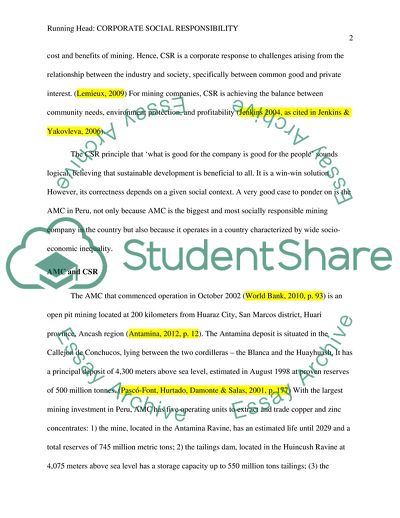Cite this document
(Corporate Social Responsibility of Perus Mining Industry Essay Example | Topics and Well Written Essays - 1500 words, n.d.)
Corporate Social Responsibility of Perus Mining Industry Essay Example | Topics and Well Written Essays - 1500 words. https://studentshare.org/history/1817080-what-is-good-for-the-company-is-good-for-the-people-peru-case
Corporate Social Responsibility of Perus Mining Industry Essay Example | Topics and Well Written Essays - 1500 words. https://studentshare.org/history/1817080-what-is-good-for-the-company-is-good-for-the-people-peru-case
(Corporate Social Responsibility of Perus Mining Industry Essay Example | Topics and Well Written Essays - 1500 Words)
Corporate Social Responsibility of Perus Mining Industry Essay Example | Topics and Well Written Essays - 1500 Words. https://studentshare.org/history/1817080-what-is-good-for-the-company-is-good-for-the-people-peru-case.
Corporate Social Responsibility of Perus Mining Industry Essay Example | Topics and Well Written Essays - 1500 Words. https://studentshare.org/history/1817080-what-is-good-for-the-company-is-good-for-the-people-peru-case.
“Corporate Social Responsibility of Perus Mining Industry Essay Example | Topics and Well Written Essays - 1500 Words”. https://studentshare.org/history/1817080-what-is-good-for-the-company-is-good-for-the-people-peru-case.


